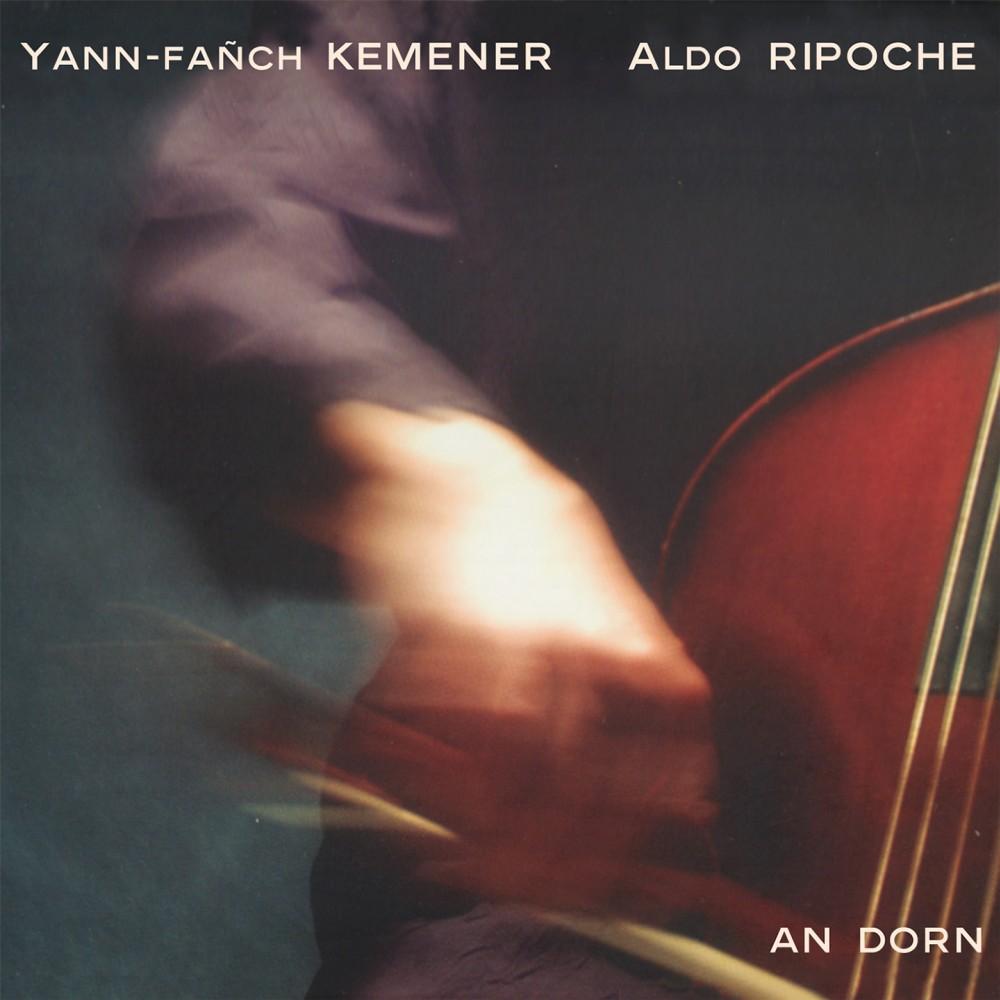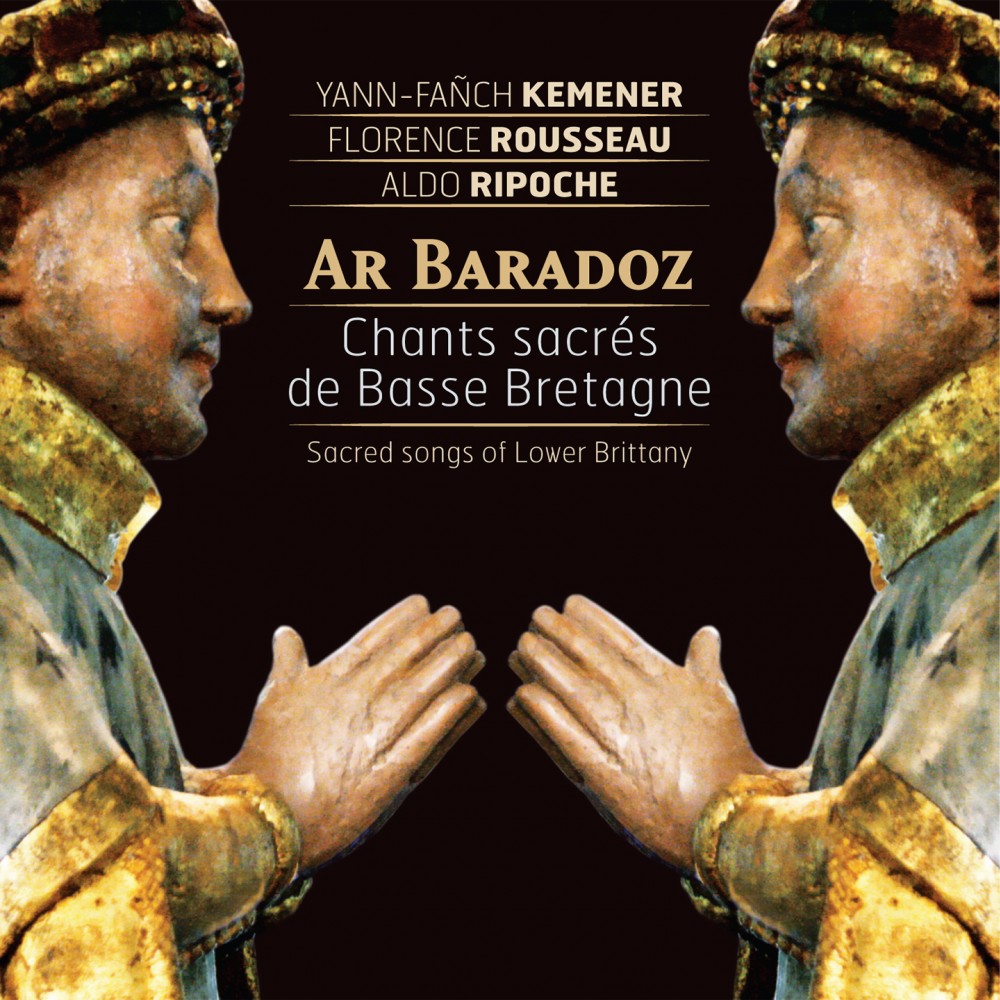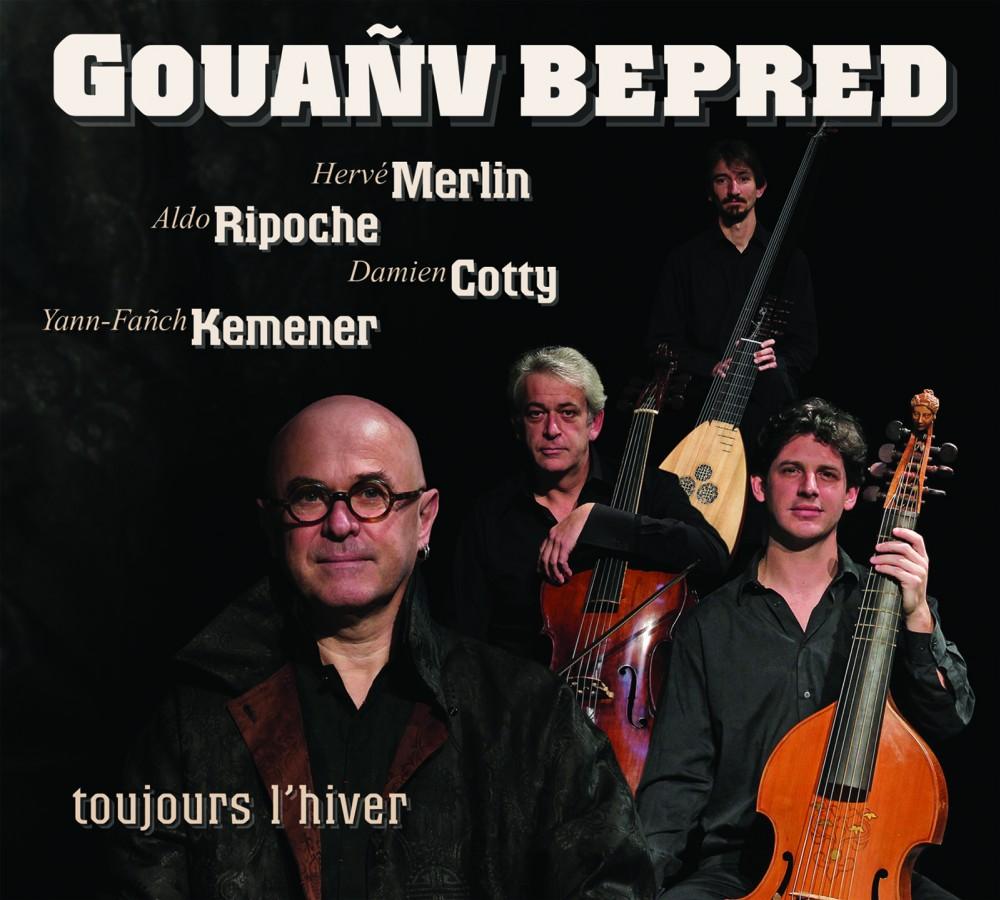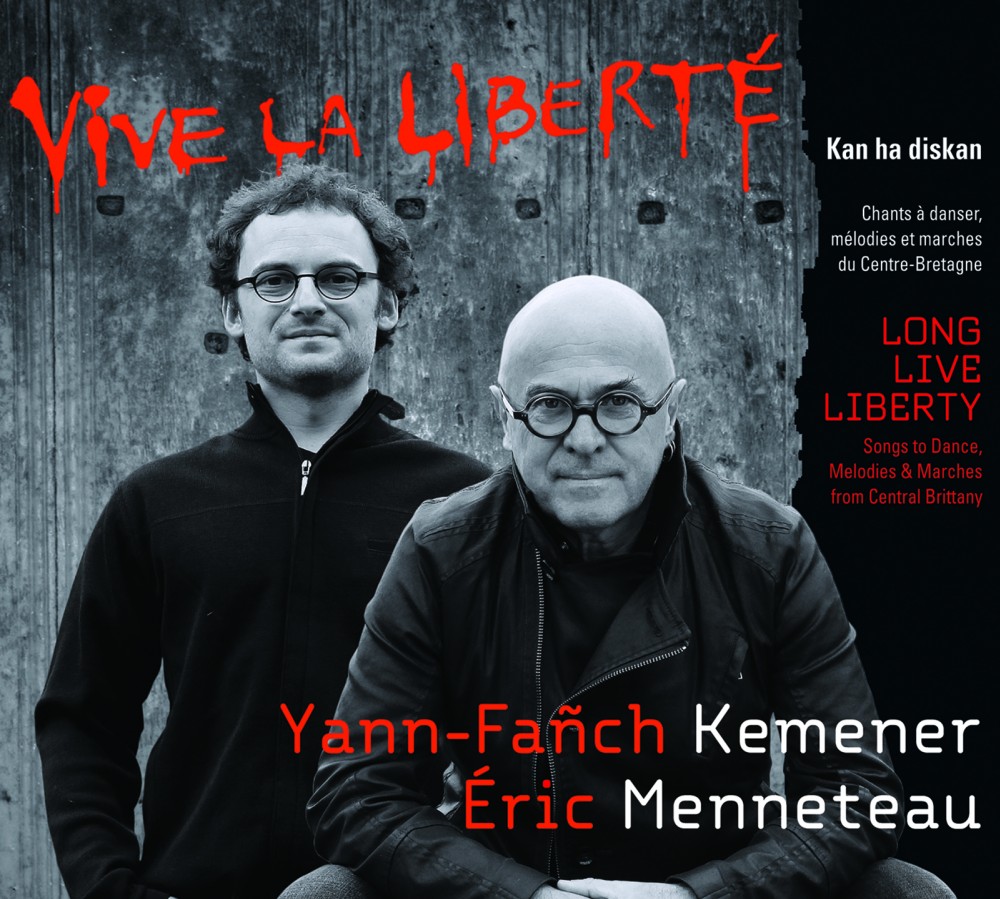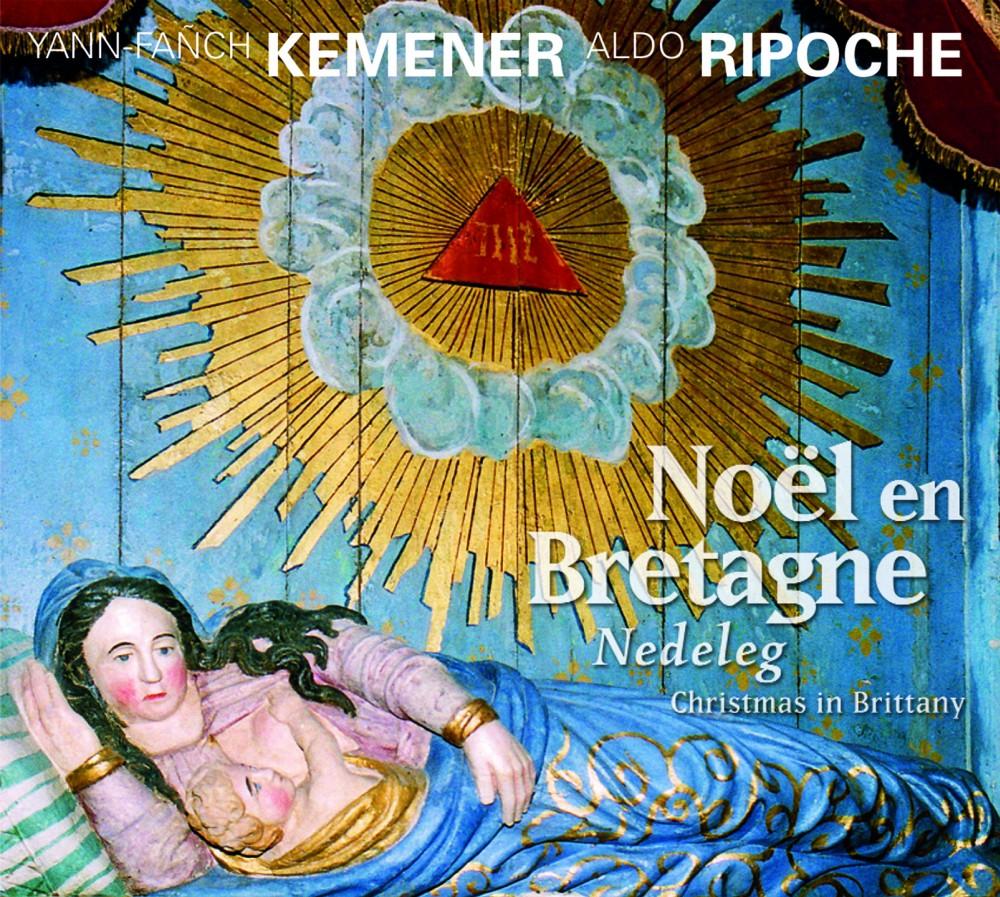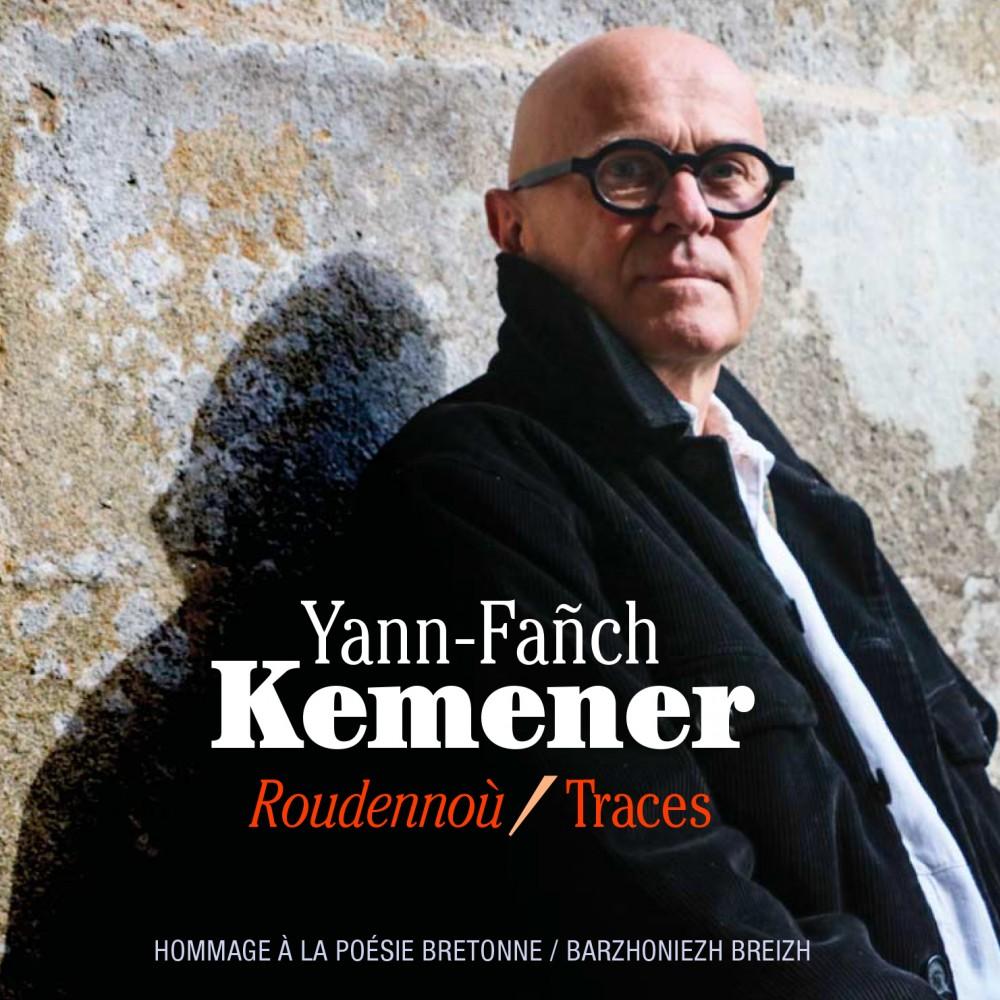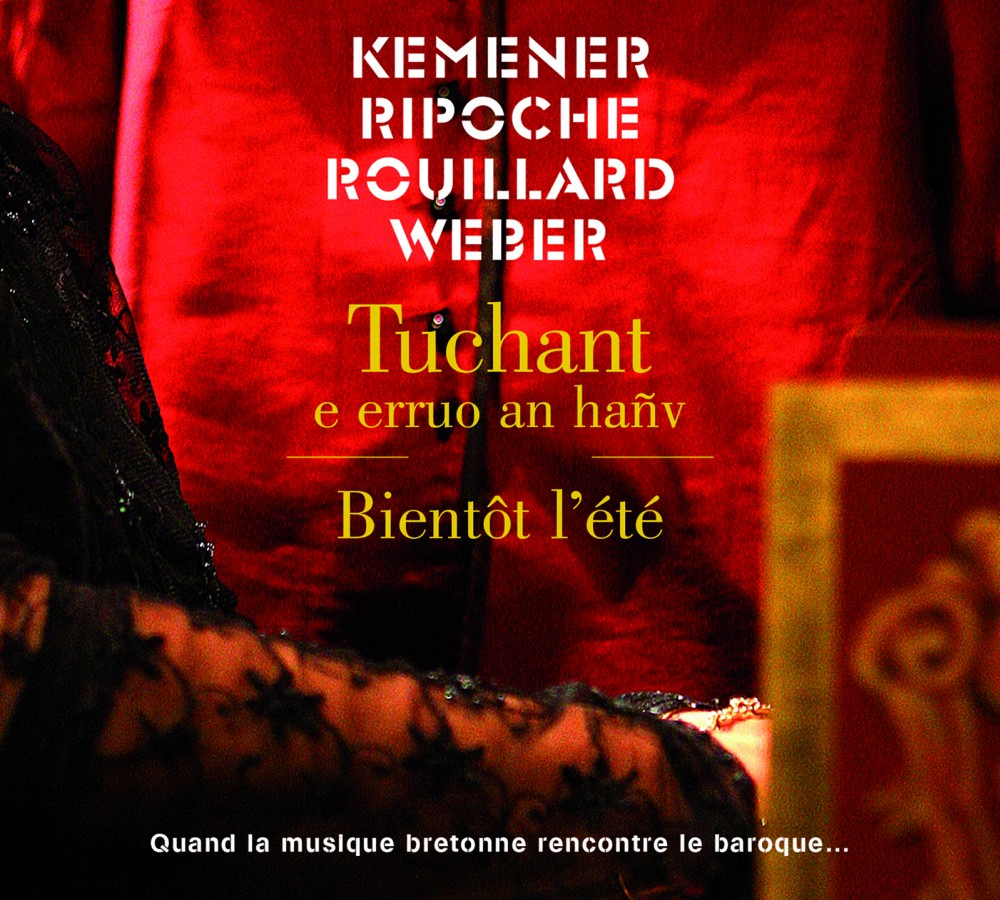As someone who passes on memory, Yann-Fañch Kemener is a living link between the past and present of Brittany. This is confirmed by this new recording, whose intention is especially audacious. Indeed, it explores the interferences between traditional and erudite music, as well as their mutual contributions and their dialogues: an original, even unique approach, whose ultimate aim is to highlight the traditional heritage, its poetic and musical richness, and its future. Yann-Fañch Kemener is developing an idea dear to him: traditional music is alive, evolving, and leading to creation within a defined sound space.
At the heart of this recording are songs from the collections by de La Villemarqué (Barzaz Breiz), Bourgault-Ducoudray (Trente mélodies populaires de Basse-Bretagne), Claudine Mazéas (in the 50s and early 60s), and Yann-Fanch Kemener himself (Carnets de route), who has no qualms about mixing a melody (Silvestrig) noted down by Bourgault-Ducoudray with lyrics he has personally collected.
TheBarzaz Breizcollectionis also found in three of the twelve Chansons Bretonnes(1931-1932) for cello and piano by Charles Koechlin (1867-1950): La Prophétie de Gwenc’hlan, Yannik Skolan, Azénor-la-Pâle. The poetic and melodic material proposed by de La Villemarqué is treated with the highest respect and even certain humility. But the instrumentation, the harmonic finery of the piano and the fugue-like writing by Yannik Skolanmake these songs come under erudite art, and thus justify the mirror-presentation deliberately chosen by Yann-Fañch Kemener, and the insertion of parlando (the spoken word)in such pieces as Azénor-la-Pâle. Ar Jouis, the story of a young girl sold to a Jew, refers to the sources of the Barzaz Breiz,the collection notebooks by La Villemarqué, discovered by Donatien Laurent who then sang the melody to Yann-Fañch Kemener. It is introduced by Prayer, a cello and piano piece of bewitching rhapsodic lyricism. Its Swiss-born and American-naturalised composer Ernest Bloch (1880-1959) has rediscovered the incantatory power of old Hebraic melodies. By a strange coincidence, there are similarities between this melody and melodies gathered from old Central Brittany singers such as Madame Bertrand. This has helped to bring these pieces together within the logic of the approach developed here.
It is particularly noteworthy that this ensemble features a cello and piano romance —Le Druide— by the Breton composer Adolphe Mahieux (1892-1931), who was trained in the tradition of Cesar Franck at the Institut des Jeunes Aveugles (school for the young blind) in Paris. This is, indeed, the first recorded work by this composer who was unjustly forgotten after he had been one of the main figures of Brest's musical life in the twenties. This ample melody, which seems to flow so naturally and leads us to expect other beautiful discoveries, seems to be an answer to the first piece in the Barzaz Breiz: Les Séries ou Le Druide et l’enfant. This is an example of the subtle exchange established at various degrees between traditional and erudite art.
In their concern to maintain the part of liberty inherent to traditional music, Yann-Fañch Kemener and his partners, Aldo Ripoche on cello and Florence Pavie on piano, have stuck to arrangements of modes and versification strictly respecting the metrics. Aldo Ripoche's interest for baroque music, its practice and playing methods, has contributed to the connection between the two musicians, one from the traditional and the other from the erudite field. The complicity thus established has in no way been altered by the shift from viola de gamba to cello, the instrument closest to the human voice. Extending to the piano undoubtedly brings on another colour, while giving the ensemble a more classical connotation. Nevertheless, it falls within the continuity of the Barzaz Breiz. Indeed, as early as the second edition (1848), de la Villemarqué introduced an arrangement of the songs for voice and piano. The propositions made by Bourgault-Ducoudray at the Congress of the Association Bretonne in 1882 were along the same lines.
In order to keep intact the force of the traditional melody carried by the intrinsic value of the word, Yann-Fañch Kemener makes the language resonate. His work on storytellers, on Emille Masson, Armand Robin and other writers and poets, has led him to stage words, playing with the place, stage space, light and sound in order to create a true live stage show.
The pieces featured on this CD come from the performances at Theâtre de Cornouaille in Quimper, on March 30th and 31st, 2006, yet the order chosen for the songs in this ensemble provides it its own dynamics while keeping the emotion intact.
More than ever, it seems that the dialectics of difference guarantees the powerful fruitfulness of the interaction between traditional and erudite music. Beyond words and sounds, music wins, in that it lives.
Marie-Claire Mussat
